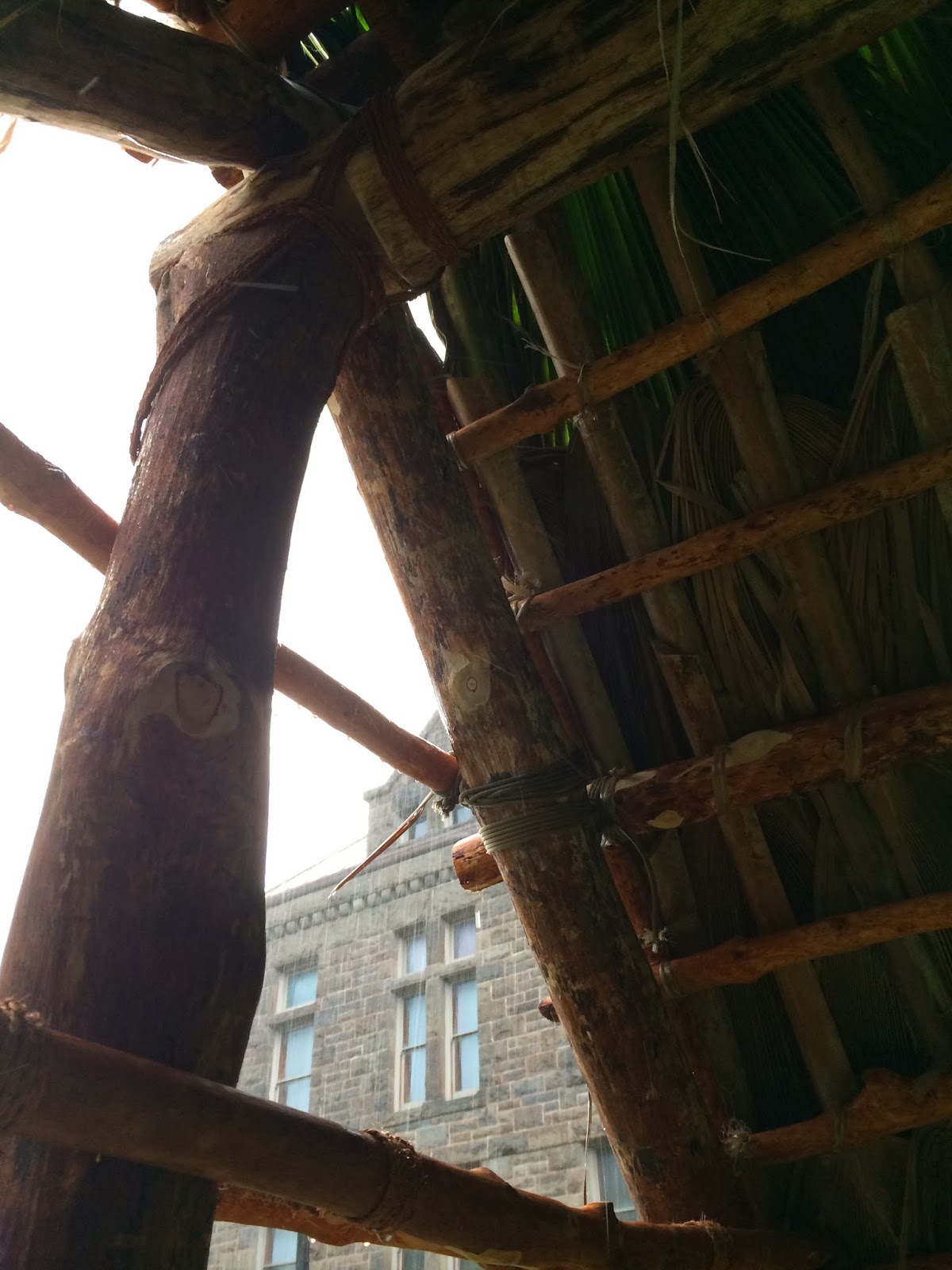Our Kumu Kaipo'i informed our Olelo Hawaii class that he was planning on visiting Bishop Museum and class would be canceled on that Thursday night. So most of us went along with him as he requested. Francis Palani Sineci, a retired efficiency expert from the army. Had a new found calling in his later years and he has become the renowned expert in the construction of traditional Hawaiian homes. Using traditional materials found in the Pacific islands. He was to give a talk about it that night and then on the following Saturday he and his group would host a workshop and actually construct a Hale outside of Atherton Halau.
Francis Palani Sineci has already made many hale all over the world. The group that he has under him already have multiple hale constructions in their own experience as well. He has even built a large Hale in Hainan, China!
A few things I recall him speaking about are that he favors using Loulu Palm for thatching. Not an endemic verity of Hawaii though, because they aren't firm enough. He takes the palms that are matured and coming off of the side. Foreign loulu palm have thorns on sides of them but he insists that once you learn to remove them. The job is not any harder than using something else.
Another cool thing he mentioned was that he uses a "Shaka" hand formation to bundle cordage. His special twining technique is useful for measuring lengths and for easy unraveling when weaving the connecting points of a hale.
He mentioned that if Home Depot could supply people with sand, stones, wooden poles, cordage and thatching. He could construct a hale in a few days. It's preparing all of the supplies that is the most time consuming part.
Most Hale placement were usually made near the shore. The roof and angle of the hale would be lined up with the horizon to help with the structure being level. Only Hale Wa'a, canoe houses would be facing the ocean instead. To make for an easy entry in a direct path from the water while carrying the wa'a inside. Thatching was usually done into the wind or in a herringbone pattern left to right with the wind. Posts were soaked in salt water for a month and situated in the supporting holes with sand. To deter termites from consuming the hale. Some materials that were used are Keawe, Eucalyptus, Strawberry Guava, Ohia, Mangrove, and Ink Berry. Hale were very important for shelter and storage. Although he mentioned that people would usually chose to sleep outside on a clear night. Hale were more importantly used to hide oneself when the high ali'i were nearby. If a commoner was seen or heard it could cost them their life. Because of strict kapu laws of the time. He shared a story about John I'i having his head buried in a hole in his families hale and covered in tapa. Because he had an inopportune coughing spell during the moment a high chief was passing their home.
Traditional Hale in the past were supported at the very base of them by human bones. They were like a blessing to the home. At times, people were actually killed for their bones. Later, people figured that using fish bones would be a lot more humanitarian.
His building techniques have also changed with the times. Some of the cordage will actually be a modern threading. Another technique that he has pioneered is the using of a wooden scaffold that is created over where the hale's roof would be. He uses this to work with gravity and build down ward instead of up like most hale builders would have theorized. Some early construction onlookers would ask why there are two roofs. But the outward scaffold, "Olokea". Would be taken down and dismantled after hale completion.
He has lost about three Hale to arson in his carear. Some others to fire. In Hawaii there are actually certifications for Hale building as well as Hale builders themselves. Permitting is very important for most areas, if you planned on having one built. Hale anywhere near to a hundred feet from a modern structure need a fire sprinkler system installed.
Some of my Hawea Heiau Complex ohana were present and Kaleo Paik actually introduced me very briefly with Kumu Francis Palani Sineci. In fact they seamed to know each other very well.
Here are the supporting poles they had already prepared for the workshop they had planned on the following Saturday, and the sample tripod that his group were constructing live while he was talking. After it was completed they tested it by having five men stand on it.
On that following Saturday I felt compelled to see if the hale was still there. Luckily it was! As a storm quickly formed over Kalihi Valley I took it unto myself to take cover under the Hale. It was a euphoric experience and it did very well to protect me from the weather.
I was told that the hale may be preserved and taken to the Kapalama Campus up the hill at Kamehameha School!



















No comments:
Post a Comment